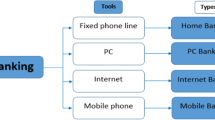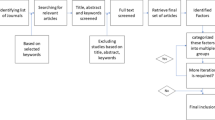Abstract
EMV is the protocol implemented to secure the communication, between a client’s payment device and a merchant’s payment device, during a contact or an NFC purchase transaction. It represents a set of security messages and rules, exchanged between the different transaction actors, guaranteeing several important security properties, such as authentication, non-repudiation and integrity. Indeed, researchers, in various studies, have analyzed the operation of this protocol in order to verify its safety: unfortunately, they have identified two security vulnerabilities that lead to multiple attacks and dangerous risks threatening both clients and merchants. In this paper, we are firstly interested in presenting a general overview of the EMV protocol and secondly, in proposing a new security solution that enhances the EMV protocol by solving the two dangerous EMV vulnerabilities. We verify the accuracy of our solution by using the Scyther security verification tool.





Similar content being viewed by others
References
EMV (2011) Book 1, Book 2, Book 3, Book 4, Version 4.3. EMVCo
EMV - Level 1 Specifications for Payment Systems (2018) EMV contactless interface specification, version 3.0. EMVCo
De Ruiter J, Poll E (2012) Formal analysis of the emv protocol suite. In: Springer theory of security and applications, pp 113–129
van den Breekel J, Ortiz-Yepes DA, Poll E, de Ruiter J (2016) Emv in a nutshell. Technical Report
EMV Consortium http://www.emvco.com/, last connection (30/12/2019)
VISA https://www.visa.fr/, last connection (30/12/2019)
MasterCard http://www.mastercard.com/fr/particuliers/index.html, lastconnection (30/12/2019)
American Express https://www.americanexpress.com/fr/, last connection (30/12/2019)
Lifchitz R (2012) Hacking the nfc credit cards for fun and debit. In: Hackito Ergo Sum conference
El Madhoun N, Bertin E, Pujolle G (2019) The EMV payment system: is it reliable?. In: The 3rd cyber security in networking international conference (CSNet). IEEE, pp 1–7
Tubb G (2013) Contactless cards: App reveals security risk. https://news.sky.com/story/contactless-cards-app-reveals-security-risk-10443980, last connection (30/11/2019)
Emms MJ (2016) Contactless payments: usability at the cost of security? Ph.D. Thesis, Newcastle University
Al-Ofeishat HA, Mohammad A (2012) Near field communication (nfc). Int J Comput Sci Netw Secur 12(2):93–99
Dierks T (2008) The transport layer security (tls) protocol version 1.2
El Madhoun N, Bertin E (2017) Magic always comes with a price: utility versus security for bank cards. In: The 1st cyber security in networking conference (CSNet). IEEE, pp 1–7
El Madhoun N, Bertin E, Pujolle G (2018) An overview of the EMV protocol and its security vulnerabilities. In: The fourth international conference on mobile and secure services (MobiSecServ). IEEE, pp 1–5
Murdoch SJ, Drimer S, Anderson R, Bond M (2010) Chip and pin is broken. In: IEEE symposium on security and privacy, pp 433–446
Shrikrishna K, Kumar NN, Shyamasundar R (2018) Security analysis of EMV protocol and approaches for strengthening it. In: International conference on distributed computing and internet technology. Springer, Berlin, pp 69–85
Emms M, Arief B, Freitas L, Hannon J, van Moorsel A (2014) Harvesting high value foreign currency transactions from emv contactless credit cards without the pin. In: Proceedings of ACM SIGSAC conference on computer and communications security, pp 716–726
Coulier F, Hoornaert F, Mennes F (2014) Remote authentication and transaction signatures. Google Patents, US Patent 8,667,285
Badra M, Badra RB (2016) A lightweight security protocol for nfc-based mobile payments. Elsevier, Procedia Comput Sci 83:705–711
de Ruiter JEJ (2015) Lessons learned in the analysis of the emv and tls security protocols. Ph.D Thesis, Radboud University
Thammarat C, Kurutach W, Phoomvuthisarn S (2017) A secure lightweight and fair exchange protocol for nfc mobile payment based on limited-use of session keys. In: 17th international symposium on, communications and information technologies (ISCIT). IEEE, Piscataway, pp 1–6
Urien P, Piramuthu S (2013) Framework and authentication protocols for smartphone, nfc, and rfid in retail transactions. In: IEEE international conference on intelligent sensors, sensor networks and information processing, pp 77–82
Ceipidor UB, Medaglia CM, Marino A, Sposato S, Moroni A (2012) Kernees: a protocol for mutual authentication between nfc phones and pos terminals for secure payment transactions. In: International ISC conference on information security and cryptology (ISCISC). IEEE, Piscataway, pp 115–120
Al-Fayoumi M, Nashwan S (2018) Performance analysis of sap-nfc protocol. Int J Commun Netw Inf Secur (IJCNIS) 10(1):125–130
Abughazalah S, Markantonakis K, Mayes K (2014) Secure mobile payment on nfc-enabled mobile phones formally analysed using casperfdr 422–431
Pourghomi P, Ghinea G et al (2013) A proposed nfc payment application. Int J Adv Comput Sci Appl 12:173–181
Lee Y-S, Kim E, Jung M-S (2013) A nfc based authentication method for defense of the man in the middle attack. In: Proceedings of the 3rd international conference on computer science and information technology, pp 10–14
Al-Tamimi M, Al-Haj A (2017) Online security protocol for nfc mobile payment applications. In: 8th International conference on information technology (ICIT). IEEE, Piscataway, pp 827–832
Kahya N, Ghoualmi N, Lafourcade P (2012) Formal analysis of pkm using scyther tool. In: International conference on information technology and e-services. IEEE, Piscataway, pp 1–6
Cremers C, Lafourcade P (2007) Comparing state spaces in automatic protocol verification. In: International workshop on automated verification of critical systems (AVoCS)
Cremers C, Mauw S (2012) Operational semantics and verification of security protocols, Springer, Berlin
Cremers CJ (2008) The scyther tool: verification, falsification, and analysis of security protocols. In: International conference on computer aided verification. Springer, Berlin
Blanchet B, et al. (2001) An efficient cryptographic protocol verifier based on prolog rules. csfw
Armando A, Basin D, Boichut Y, Chevalier Y, Compagna L, Cuéllar J, Drielsma PH, Héam P-C, Kouchnarenko O, Mantovani J et al (2005) The avispa tool for the automated validation of internet security protocols and applications. In: International conference on computer aided verification. Springer, Berlin
Zhang L, Ma M (2020) Secure and efficient scheme for fast initial link setup against key reinstallation attacks in IEEE 802.11 ah networks. International Journal of Communication Systems, Wiley Online Library
Subramanian NV, Dehliger J (2006) Multi-protocol attack: a survey of current research
Cremers CJF (2006) Scyther: semantics and verification of security protocols. Eindhoven University of Technology, Eindhoven
Ahamad SS, Pathan A-SK (2019) Trusted service manager (tsm) based privacy preserving and secure mobile commerce framework with formal verification. In: Complex adaptive systems modeling. Springer, Berlin
Mansour I, Lafourcade P, Chalhoub G (2014) Mécanismes d’authentification pour des réseaux de capteurs sans fil multi-sauts
Naoui S, Elhdhili ME, Saidane LA (2020) Novel enhanced Lorawan framework for smart home remote control security. In: Wireless personal communications. Springer, Berlin
Amin R, Lohani P, Ekka M, Chourasia S, Vollala S (2020) An enhanced anonymity resilience security protocol for vehicular ad-hoc network with scyther simulation. In: Computers & electrical engineering. Elsevier, Amsterdam
Huang J, Huang C-T (2016) Design and verification of secure mutual authentication protocols for mobile multihop relay wimax networks against rogue base/relay stations. J Electr Comput Eng Hindawi, vol. 2016:1–12
Kotzanikolaou P (2016) Cryptographic protocol analysis—a short introduction to the scyther tool Presentation at FOSSCOMM 2016-University of Piraeus
Mohammad Z (2020) Cryptanalysis and improvement of the yak protocol with formal security proof and security verification via scyther. International Journal of Communication Systems, Wiley
Cremers C (2011) Key exchange in ipsec revisited: formal analysis of ikev1 and ikev2. In: European symposium on research in computer security. Springer, Berlin
Cremers C, Horvat M (2014) Improving the iso/iec 11770 standard for key management techniques. In: International conference on research in security standardisation. Springer, Berlin
Cremers C, Horvat M (2016) Improving the iso/iec 11770 standard for key management techniques. International Journal of Information Security. Springer
Basin D, Cremers C (2011) Evaluation of iso/iec 9798 protocols: Version 2.0. ETH Zurich
Basin D, Cremers C, Meier S (2013) Provably repairing the iso/iec 9798 standard for entity authentication 1. J Comput Secur 21(6):817–846
Lu S, Zhao J, Cheng Q (2016) Cryptanalysis and improvement of an efficient authenticated key exchange protocol with tight security reduction. International Journal of Communication Systems, Wiley Online Library
Cheng Q, Lu S, Ma J (2017) Analysis and improvement of the internet-draft ikev3 protocol. International Journal of Communication Systems, Wiley Online Library
Kahya N, Ghoualmi N, Lafourcade P (2012) Secure key management protocol in wimax. International Journal of Network Security & Its Applications. Academy & Industry Research Collaboration Center (AIRCC)
Yang H, Oleshchuk VA, Prinz A (2016) Verifying group authentication protocols by scyther. JoWUA
Lavanya M, Natarajan V (2017) Lwdsa: light-weight digital signature algorithm for wireless sensor networks. Sādhanā. Springer
Nikooghadam M, Amintoosi H (2020) An improved secure authentication and key agreement scheme for healthcare applications. In: 2020 25th International computer conference, computer society of Iran (CSICC). IEEE
Binu S, Misbahuddin M, Paulose J (2020) A signature-based mutual authentication protocol for remote health monitoring. SN Computer Science. Springer, Berlin
Lowe G (1997) A hierarchy of authentication specifications. In: Proceedings 10th computer security foundations workshop. IEEE
Author information
Authors and Affiliations
Corresponding author
Additional information
Publisher’s note
Springer Nature remains neutral with regard to jurisdictional claims in published maps and institutional affiliations.
Rights and permissions
About this article
Cite this article
El Madhoun, N., Bertin, E., Badra, M. et al. Towards more secure EMV purchase transactions. Ann. Telecommun. 76, 203–222 (2021). https://doi.org/10.1007/s12243-020-00784-1
Received:
Accepted:
Published:
Issue Date:
DOI: https://doi.org/10.1007/s12243-020-00784-1




